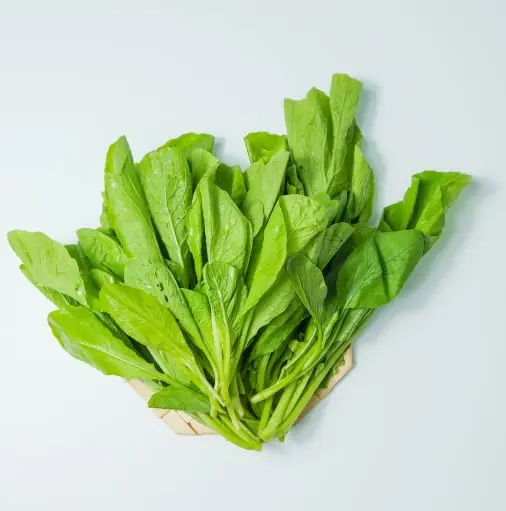Leafy greens traceability app:
Leafy greens traceability app packing & processing of kale, microgreens, collard greens, spinach, cabbage, beet, watercress, romaine lettuce, Swiss chard, arugula, rukola, endive, pak choy, turnip greens: Recall, audit, and mock audits made easy, automatic traceability for leafy greens.

Leafy greens Traceability during production & packing
View Traceability App Specifications.
Leafy Green Traceability Pilots
IFT’s GFTC and several food industry organizations collaborated with industry stakeholders to support the New Era of Smarter Food Safety. Leafy green traceability pilots reveal the value of sharing extended product information during a traceback investigation.
IFT’s GFTC and several food industry organizations collaborated with industry stakeholders to support the New Era of Smarter Food Safety. Leafy green traceability pilots reveal the value of sharing extended product information during a traceback investigation.
Partner Organizations
FMI-The Food Industry Association
GS1 US
International Foodservice Distributors Association (IFDA)
Institute of Food Technologists (IFT)
Produce Marketing Association (PMA)
United Fresh Produce Association (United Fresh)
Overview
Partners included growers, distributors, and both independent and chain retailers from July through October.
The pilots focused on various romaine-containing products with consideration for different product/supply chain configurations.
The pilots showed that investigations into foodborne illness outbreaks could be streamlined and conducted more effectively when supply chain partners provided extended product information during tracebacks.
The use of a standard template called the Produce Traceback Template to exchange pertinent product information was found to enhance the speed of tracing procedures.
All three pilots were successful in tracing the source of the affected product.
Leafy Greens Task Force Charter (PDF) provides additional details of the project’s goals and objectives
GFTC Leafy Green Traceability Pilots
Leafy Green Traceability Pilots Full Report
The pilot report provides guidance on a path forward for future use of the template including additional industry training and modifications to maximize effectiveness and increase ease of use.

Leafy greens packhouse hygiene checklist for food safety
Stay up-to-date on all the latest developments in food traceability
Subscribe
FDA’s Overall Goal and Objectives
Work with leafy green stakeholders to design and initiate a pilot that will deliver the key traceability concepts needed for scaling better industry practices such as testing interoperability of tracing systems and public-private data sharing. For more, see the FDA Leafy Greens Action Plan.
Provide industry with better visibility into Coordinted Outbreak Response and Evaluation (CORE) traceability processes
Examine utility of Produce Traceback Template, which was an outcome of the Romaine Task Force
Pilot Process
The pilots tracked romaine lettuce through three separate supply chains, starting with actual consumer purchases made with loyalty cards or credit cards. Small teams of industry experts mimicked FDA’s role in conducting the traceback, including determining the data to be requested, and how to format the requests for such data. Supply chain members, starting with the point-of-sale or point-of-service, used the template to provide key data elements that allowed an item to be traced back to its source. The expert groups conducting the traceback analyzed the information provided by each supply chain node to determine next steps.
Key Findings for Leafy Greens Traceability
Although the participants stated they would adopt the template in the future, the pilots revealed opportunities to refine the template, and highlighted the need for a greater focus on education. The pilot report provides guidance on a path forward for future use of the template including additional industry training and modifications to maximize effectiveness and increase ease of use.
Notably, the data that enabled each of the teams to independently and successfully identify the finished product lot purchased by the consumer is not currently captured by the template. These data included business intelligence, such as sales data, stock rotation, inventory controls and delivery schedules. These were critical in bracketing the scope of the traceback.
A group of six industry organizations today release a report outlining four months of leafy green traceability pilots with supply chain partners, including growers, distributors, and both independent and chain retailers, offering a detailed response to the U.S. Food and Drug Administration (FDA)’s call for improved traceability in the food system. The pilots, conducted July through October, showed that investigations into foodborne illness outbreaks could be streamlined and conducted more effectively when supply chain partners provided extended product information during tracebacks. Additionally, the use of a standard template called the Produce Traceback Template to exchange pertinent product information was found to enhance the speed of tracing procedures. All three pilots were successful in tracing the source of the affected product.

Leafy greens Traceability management best practices
The six organizations that led this industry activity included: FMI-The Food Industry Association, GS1 US, the International Foodservice Distributors Association (IFDA), the Institute of Food Technologists (IFT), the Produce Marketing Association (PMA) and United Fresh Produce Association (United Fresh). The pilots tracked romaine lettuce through three separate supply chains, starting with actual consumer purchases made with loyalty cards or credit cards. Small teams of industry experts mimicked FDA’s role in conducting the traceback, including determining the data to be requested, and how to format the requests for such data. Supply chain members, starting with the point-of-sale or point-of-service, used the template to provide key data elements that allowed an item to be traced back to its source. The expert groups conducting the traceback analyzed the information provided by each supply chain node to determine next steps.
Although the participants stated they would adopt the template in the future, the pilots revealed opportunities to refine the template, and highlighted the need for a greater focus on education. The pilot report provides guidance on a path forward for future use of the template including additional industry training and modifications to maximize effectiveness and increase ease of use.
Notably, the data that enabled each of the teams to independently and successfully identify the finished product lot purchased by the consumer is not currently captured by the template. These data included business intelligence such as sales data, stock rotation, inventory controls and delivery schedules. These were critical in bracketing the scope of the traceback.
“As outlined in the New Era of Smarter Food Safety Blueprint, pilots like these are necessary to determine what is needed for traceability to further scale, such as testing interoperability and public and private data sharing,” said Bryan Hitchcock, executive director of IFT’s Global Food Traceability Center, on behalf of the six organizations. “The pilots provided valuable insights that will inform future outbreak response and recall protocols, helping industry to work together to support the FDA’s focus on tech-enabled traceability.”
For more information on the pilot, please visit ift.org/leafygreens.
About FMI-The Food Industry Association - As the food industry association, FMI works with and on behalf of the entire industry to advance a safer, healthier and more efficient consumer food supply chain. FMI brings together a wide range of members across the value chain — from retailers that sell to consumers, to producers that supply food and other products, as well as the wide variety of companies providing critical services — to amplify the collective work of the industry. www.FMI.org
About GS1 US - GS1 US, a member of GS1, is an information standards organization that brings industry communities together to solve supply-chain problems through the adoption and implementation of GS1 standards. More than 300,000 businesses in 25 industries rely on GS1 US for trading-partner collaboration and for maximizing the cost effectiveness, speed, visibility, security and sustainability of their business processes. They achieve these benefits through solutions based on GS1 global unique numbering and identification systems, bar codes, Electronic Product Code (EPC®)-based Radio Frequency Identification (RFID, data synchronization, and electronic information exchange. GS1 US also manages the United Nations Standard Products and Services Code (UNSPSC®). www.GS1US.org
About IFDA - The International Foodservice Distributors Association (IFDA) is the premier trade organization representing the $303 billion foodservice distribution industry and the 350,000 people it employs. This industry ensures a safe and efficient supply of food and products to more than one million restaurants and foodservice outlets in the U.S. every day. For more information, visit www.ifdaonline.org.

Leafy greens Supplier Traceability Management
About IFDA - The International Foodservice Distributors Association (IFDA) is the premier trade organization representing the $303 billion foodservice distribution industry and the 350,000 people it employs. This industry ensures a safe and efficient supply of food and products to more than one million restaurants and foodservice outlets in the U.S. every day. For more information, visit www.ifdaonline.org.
About IFT - The Institute of Food Technologists (IFT) is a global organization of approximately 13,000 individual members from 95 countries committed to advancing the science of food. Since 1939, IFT has brought together the brightest minds in food science, technology and related professions from academia, government, and industry to solve the world’s greatest food challenges. Our organization works to ensure that our members have the resources they need to learn, grow, and advance the science of food as the population and the world evolve. We believe that science is essential to ensuring a global food supply that is sustainable, safe, nutritious, and accessible to all. For more information, please visit www.ift.org.
About Produce Marketing Association (PMA) - Produce Marketing Association is the leading trade association representing companies from every segment of the global produce and floral supply chain. PMA helps members grow by providing business solutions that expand business opportunities and increase sales and consumption. For more information, visit www.pma.com.
About United Fresh Produce Association (United Fresh) - Founded in 1904, the United Fresh Produce Association serves companies at the forefront of the global fresh and fresh-cut produce industry, including growers, shippers, fresh-cut processors, wholesalers, distributors, retailers, foodservice operators, industry suppliers and allied associations. From its headquarters in Washington, D.C. and Western Regional office in Salinas, Calif., United Fresh and its members work year-round to make a difference for the produce industry by driving policies that increase consumption of fresh produce, shaping critical legislative and regulatory action, providing scientific and technical leadership in food safety, quality assurance, nutrition and health, and developing educational programs and business opportunities to assist member companies in growing successful businesses.
LEAFY GREENS TRACEABILTY SYSTEMS
From July through the end of October, 2020, GS1 US worked with five other industry organizations and key industry stakeholders to simulate multiple recalls involving three different types of romaine lettuce products.
In response to the U.S. Food and Drug Administrations (FDA’s) initiatives for improved traceability in the produce supply chain, the Food Marketing Institute, GS1 US, the International Foodservice Distributors Association, the Institute of Food Technologists, Produce Marketing Association, and United Fresh focused these pilots on tracing leafy green products through actual consumer purchases made with loyalty cards or credit cards. Pilot results demonstrated an investigation can be conducted more effectively when supply chain partners gather pertinent information from each other that may not always be asked by investigators during tracebacks. The pilots also revealed that an enhanced standard template could improve the speed of tracing procedures.
These pilots just scratch the surface of what can be done to enhance food traceability processes in the leafy greens sector. A category that has too often been the subject of widespread foodborne illness outbreaks over the past several years, it represents an opportunity for the industry to collaborate and more fully leverage the digital tools available to them to pinpoint the source of harmful pathogens or other recall triggers.
Let’s examine more of the key findings of the 2020 Leafy Greens Traceability Pilots, which are sure to be key indicators of how traceability will evolve to meet consumer expectations for transparency, sustainability, and safety.
Existing Product Movement Information Led to Lot Identification
One of the most important findings placed great emphasis on existing product movement information. Extended data, gathered from a supplier (grower or processor) to a distribution center (retailer distribution center or third-party), into the store, and out through point-of-sale, was key to helping the industry experts successfully identify the lots from where the romaine originated.
Take a look at each pilot scenario below to see how each pilot varied in its structure but similarly leveraged the power of extended product data to enhance the traceability of the romaine:
• Pilot 1: This pilot involved branded bagged salad from a regional chain grocery store. By understanding product movement in this supply chain, and by requesting additional information from the retailer and processor, the pilot team identified the single product lot, which traced back to two growers and a total of three ranch-field-sublot combinations (Figure 1).
• Pilot 2: This pilot involved romaine hearts sold at an independent retailer that used a third-party distributor. By understanding product movement in this supply chain, pilot team 2 was successful in identifying the two lot numbers of the finished product that could have been purchased by the consumer.
• Pilot 3: This pilot involved private label salad (under U.S. Department of Agriculture jurisdiction) from a national chain store. Due to the fact the product had been out of stock prior to the consumer purchase, this “clean break” allowed pilot team 3 to identify two possible finished product lot numbers on the purchase date.
Raising Awareness of Information Available at Each Step
Each of the three expert teams that conducted the tracebacks reported a better understanding of the traceback process and were occasionally surprised by which points in the supply chain retained different pieces of information. In all pilots, the teams augmented their requests for industry information and data beyond the scope of the key data elements identified in the traceback template. It was these other data requests that proved critical in identifying the finished product lot number associated with the purchase of interest. Here are some examples of the types of information and the value they provided:
BETTER TRACEABILITY FOR LEAFY GREENS
In response to FDA's September call for improved leafy greens traceability, a group of six food industry organizations in December released a report outlining four months of leafy green traceability pilots with supply chain partners, including growers, distributors and both independent and chain retailers.
Three pilot tests to track a theoretically recalled lot of produce were conducted July through October, and all were successful in tracing the source of the affected product.